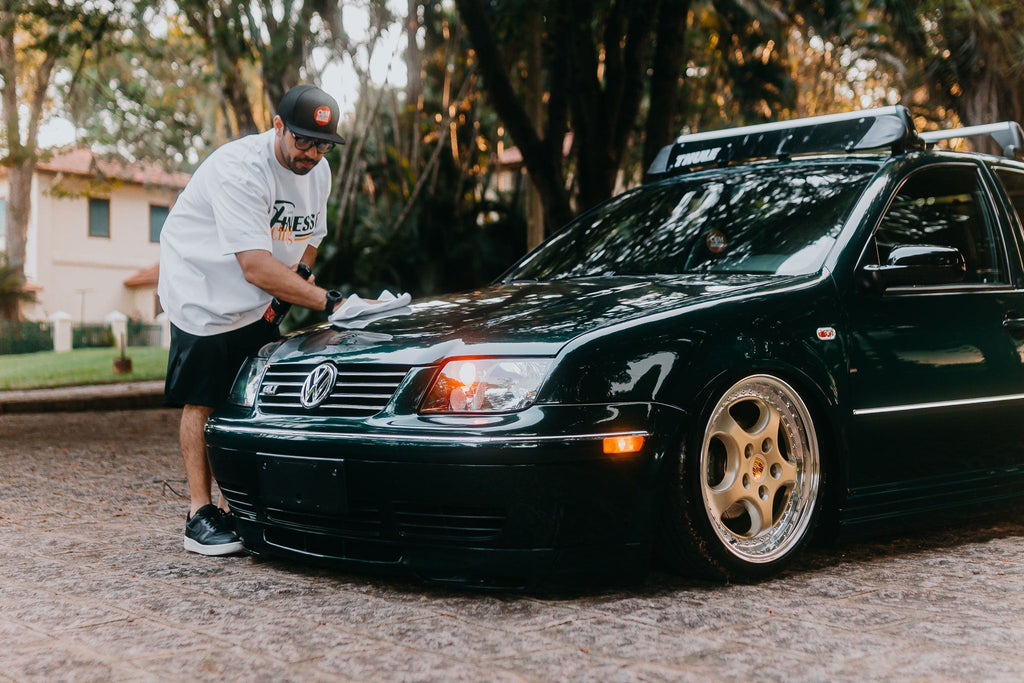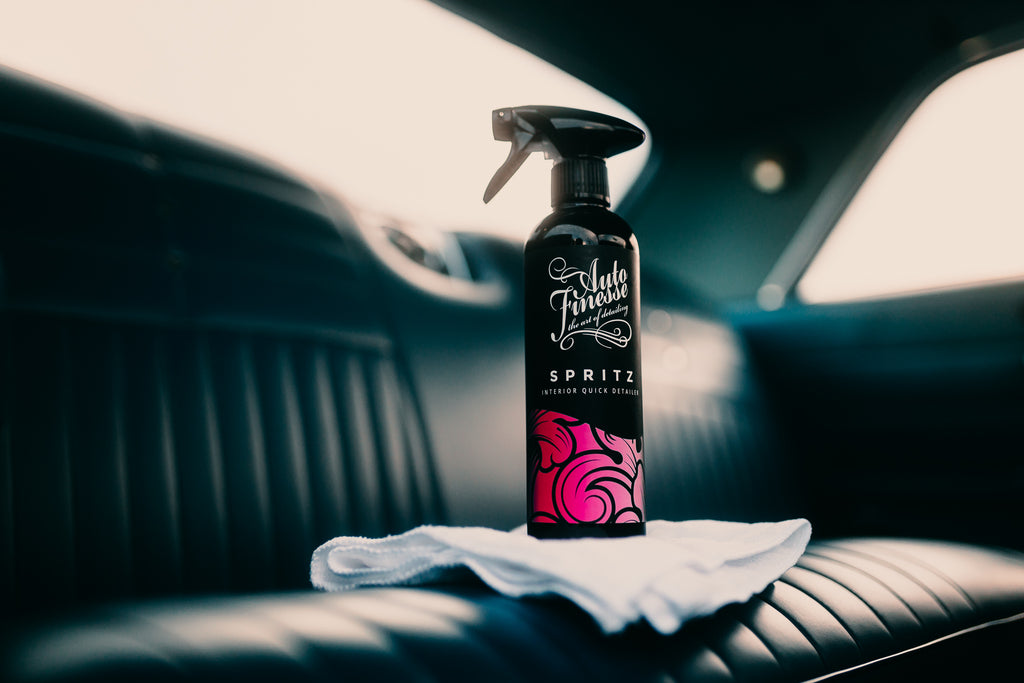Headlight Restoration By Hand
Many cars come with plastic headlights as standard, and over time, exposure to the elements and UV radiation can cause them to become faded, foggy, and yellowed. This not only dulls the appearance of the lights but also affects their beam diffusion, making them unsafe. In the UK, this can even lead to an MoT failure, and it's a concern for vehicle inspections worldwide. Beyond safety, faded headlights can make a car look dated and can detract from an otherwise flawless detail. The good news is that restoration is simple. Using light abrasives, you can restore faded plastic headlights, even by hand, without needing expensive equipment or specialised restoration kits. In fact, you can revive your cloudy headlights with Auto Finesse products you likely already have in your detailing kit—without the need to remove the lights!

Start by cleaning your car as usual with a thorough pre-wash and contact wash. After rinsing and drying the vehicle, give your headlights some extra attention using Verso All Purpose Cleaner and a detailing brush. Clean the entire lens, making sure to focus on the edges where dirt can get trapped. Once rinsed and dried again, you're ready to begin. The first step is the simplest: ensure the headlight surface is as clean as possible. Although you'll be using abrasives for restoration, any remaining grit or grime can cause deeper scratches and embed itself into the soft plastic, worsening the condition. So, it's crucial to start with a spotless surface for the best results.

Since you're unlikely to remove your headlights for this job, it's important to protect the surrounding areas. Use high-quality masking tape to cover about an inch around the headlights, making sure to get into all the recesses while avoiding the lens surface. This will safeguard the paintwork and trim from any scratches that could be caused by the abrasives spilling over during the restoration process.


In many cases, faded plastic headlights can be restored using just paint compounds and polishes. However, for more heavily damaged lenses, you'll need to use more aggressive abrasives than those found in typical paint correction products. Wet sanding is the technique used here, involving a series of wet & dry sandpaper, starting with coarser grits and working your way to finer ones.
For soft plastic lenses, choose sandpaper grades much finer than those used in body shops for filler or rust removal. Stick to grades above 1000-grit to avoid causing additional damage, and in this case, we're using 1200, 2000, and 3000-grit paper, starting with 1200-grit. To avoid overheating or over-sanding the plastic, it's best to perform this process by hand, not with a rotary or dual-action sander.
It's crucial to keep the surface wet throughout the sanding process to lubricate the paper and prevent heat build-up. A spray bottle with a small amount of Lather Car Shampoo diluted with water works best. Using light pressure and letting the sandpaper do the work, move through each grit one by one. Sand with the first grit in a single direction, then switch to the opposite direction with the second grit, and continue the process with each subsequent grade.
Avoid circular motions, as these can create swirl marks that will need extra compounding later. Keep the sandpaper flat on the surface, spraying more soapy solution as needed and wiping away any residue. When the sandpaper glides smoothly across the surface with minimal resistance, it's time to move to the next finer grade. After working through all the grits and allowing the lens to air-dry, you'll notice that while the plastic feels smooth, it will still appear hazy.


The restoration and polishing stage focuses on refining the surface using a series of compounds from our Revitalise System. This step removes the hazing and any light scratches from wet sanding, leaving behind a smooth, clear finish. Essentially, the Revitalise compounds are applied to headlights in the same way as they would be on paintwork. While a DPX Dual Action Polisher and full-size Revitalise Pads can speed up the process, the smaller surface area of headlights makes our Revitalise 85mm Spot Pads paired with a Handi Puck just as effective. This setup is especially convenient for those without a machine polisher or access to power.
Begin with the coarsest compound, progressing through each finer grade (Revitalise No.1 to Revitalise No.3), using a fresh pad for each. Buff off any residue with a clean microfibre cloth between each stage. For best results, apply each compound with light pressure and small, overlapping circular motions, ensuring the headlight surface is evenly covered for a gleaming, restored finish.



If additional refinement is needed after the compound stages, you can achieve this by applying Tripple All-in-One Polish in the same way. However, in most cases, the compounding steps will provide a high-quality finish, requiring only a final buff with Finale Quick Detailer for extra shine and a protective layer. While plastic lenses don’t need sealants or wax, you can still enhance protection during future maintenance washes with Aqua Coat Hydrophobic Rinse Aid or Lavish Ceramic Foam.



























